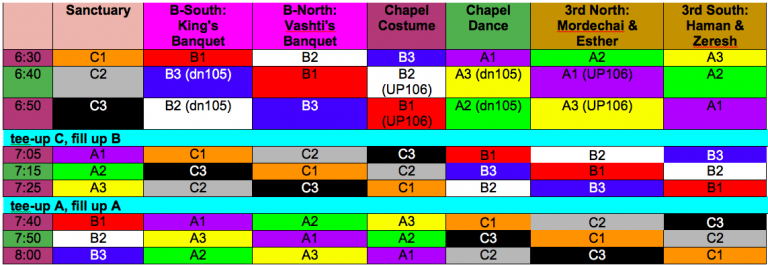
This site-specific immersive community-engaged performance explored The Book of Esther.
Each year from 2010-2015, I devised and directed a new community-engaged game/performance to critically explore the Jewish holiday of Purim identity through irreverent “shpiels.”
We co-created a unique collaborative performance to critically explore ethnicity, identity, and the sacred text.
The performances catalyze civic engagement and meaning-making.
As one example, for Shluff No More, I orchestrated a 60-member crew to guide 400 audience members around nine locations of a three-story synagogue in under 2 hours. Each scene playfully disarmed congregants as they encountered sacred text from The Book of Esther.
Participants reported how the event deepened their affiliation and transformed their relationship with the themes of ethnic strife.
Organizing the game logistics required tremendous planning. With the help of my dear friend Scott Osman, here is a glimpse at how I laid out the team coordination:

Each room featured participatory structures I designed to playfully disarm congregants and help them enjoy greater proximity. Three years later, many participants continue to report how the event deepened their feelings of affiliation and transformed their relationship with the themes of ethnic strife. The image below captured during the Costume Contest, conducted through Silent Disco headphones.

I had also had the opportunity to work with amazingly talented designers. For one example, Chantal Demorial and Gideon Solomon converted the basement into Vashi’s Den.

